Visit an apiary in Reunion at “Autour des Ruches”
Visit an apiary… honey fan or not, this Zarlor about the Tour des Roches’ apiary in Saint-Paul is a magical moment to spend alone, as a couple or as a family. Interesting and playful, Dorothée takes us into the fabulous world of bees.
What is a Zarlor ?
Zarlor is a creol word that means « treasure » !
But here, ” Zarlor ” are activities, recommendations (guided tours, sport or cutltural activities…) highlighted by the Tourist Office to discover or re discover the West part of the island.
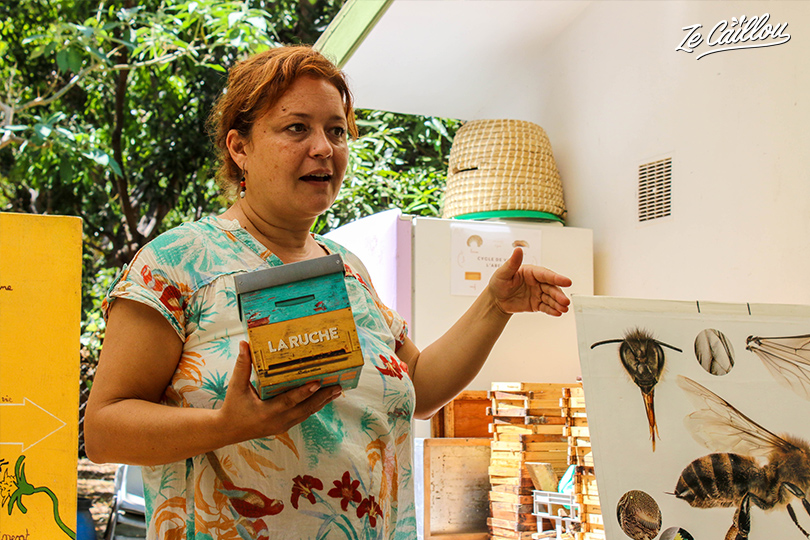
Meet at “Autour des Ruches”
A stone’s throw from the famous Saint-Paul pond protected by the RAMSAR appellation and the small bathing point of the Tour des Roches mill, we have an appointment at 8 a.m. with Dorothée, beekeeper (and musician) for a moment of education in the environment very interesting and magical.
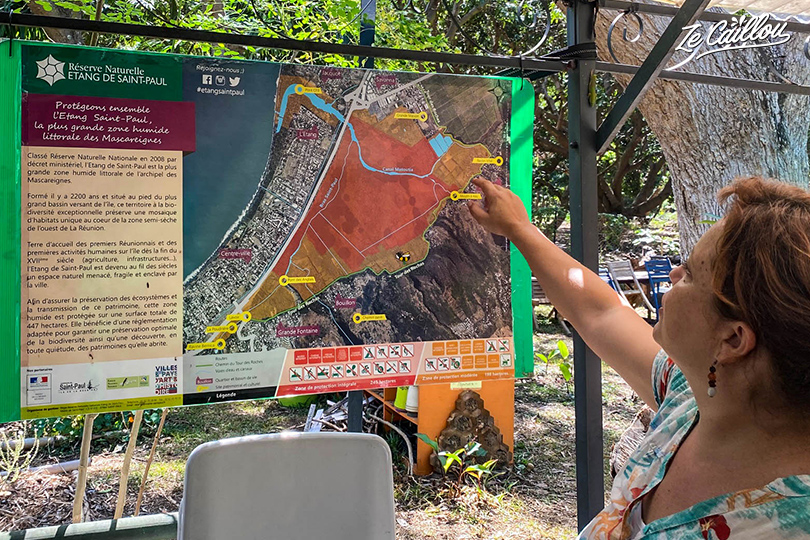
The site belongs to the department but she created this educational apiary 3 years ago and works with several schools to provide preventive education and raise awareness of the importance of the role of bees in everyday life.
Some hives are also sponsored by the town hall but also by schools in Saint-Paul. This makes it possible to support its work and to involve the children in a more sustainable way.
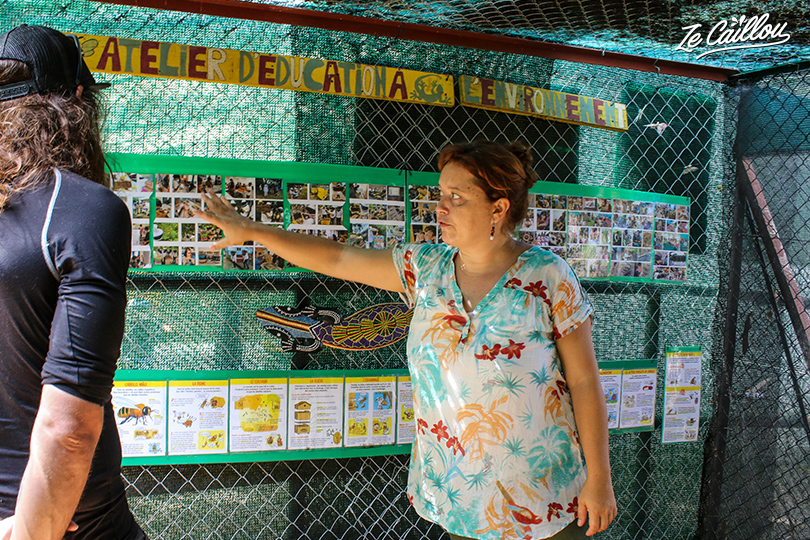
Indeed, Dorothée Ninotta, who has also worked for a few years with Paulo (see article Paulo’s garden) offers a complete workshop around bees. A real immersion in the fabulous world of these versatile little workers: social organization, importance for the environment, conservation, beekeeping, hive products…
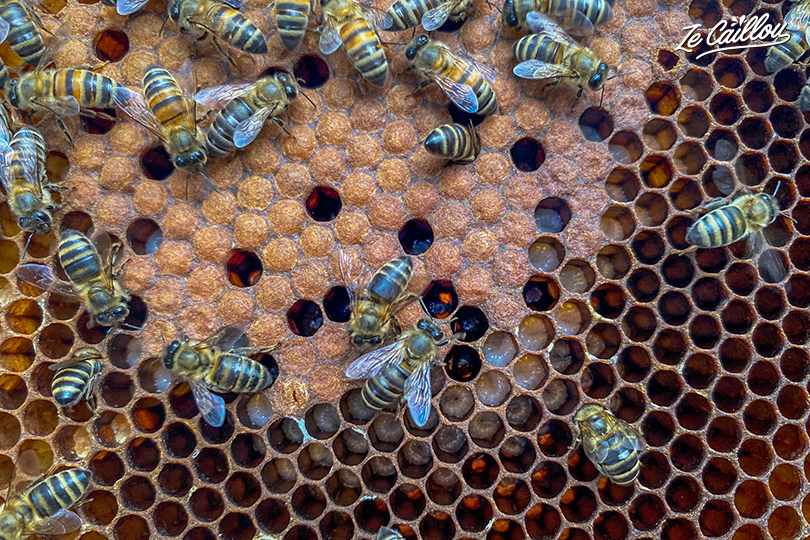
Weave Cake and Honey Herbal Tea!
To get the morning off to a good start, she offers us a little péi snack. Homemade weave and herbal tea cake with plants… and honey from the garden of course!
The bees move up to 3km around the apiary (Bernica, seafront, ravine), so they produce all-flower honey.
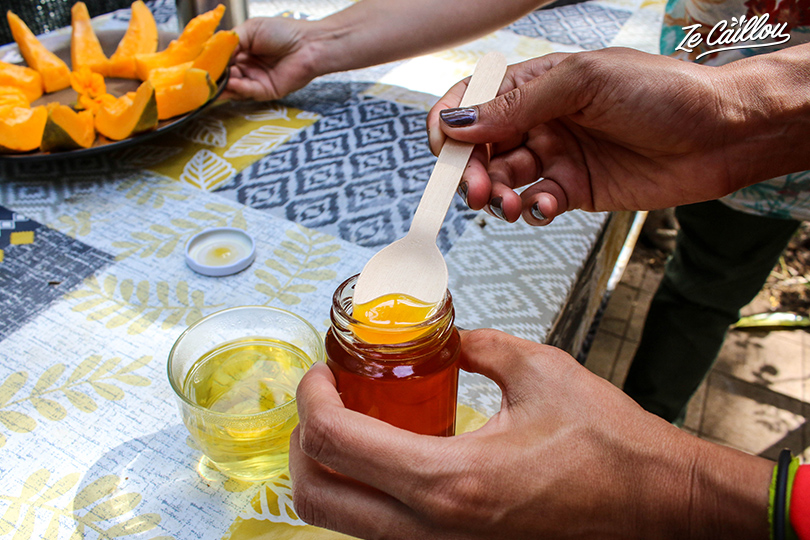
Our herbal tea in hand, we go around the owner and we start learning.
Dorothée shows us the different spaces:
- the small garden with apiphilous species (that bees like),
- the Parkmoun, “the safe place” for those who do not want to enter space with the hives afterwards,
- the Parkmoush (the apiary)… and even
- dry toilets! And yes, that way there’s no drinking water going down the drain!
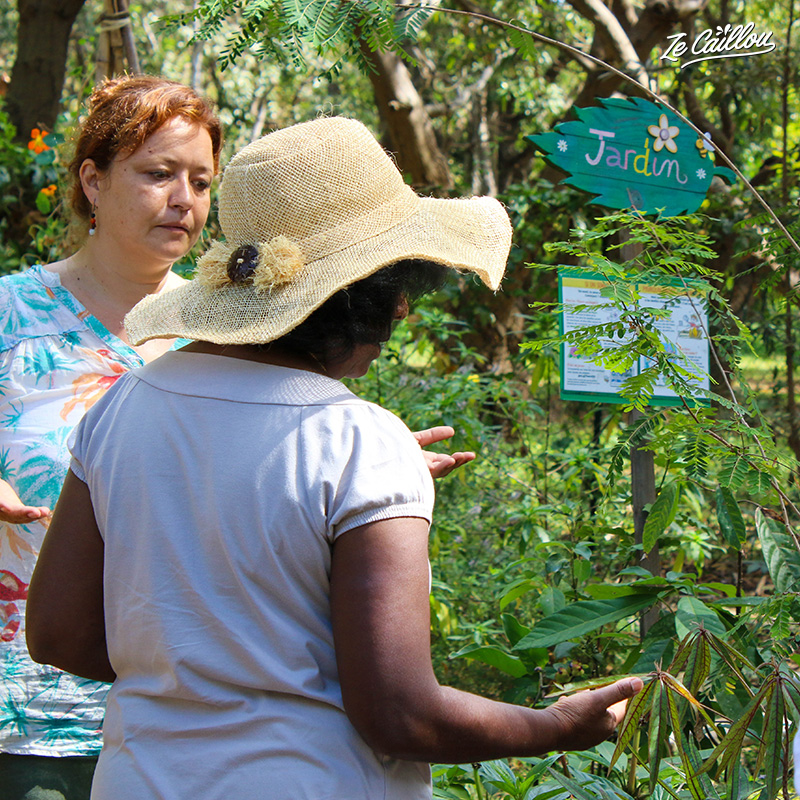
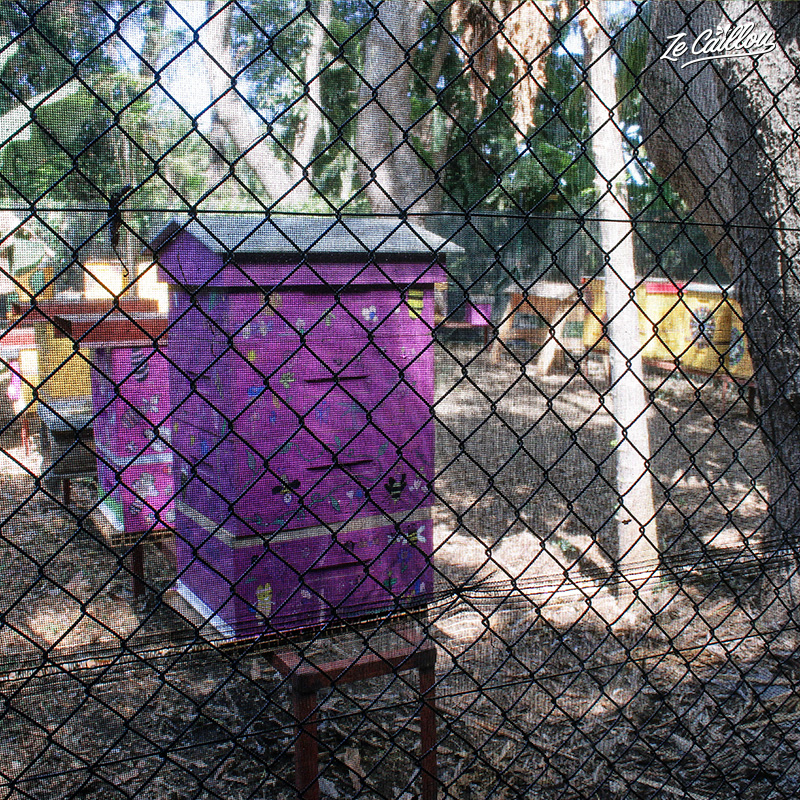
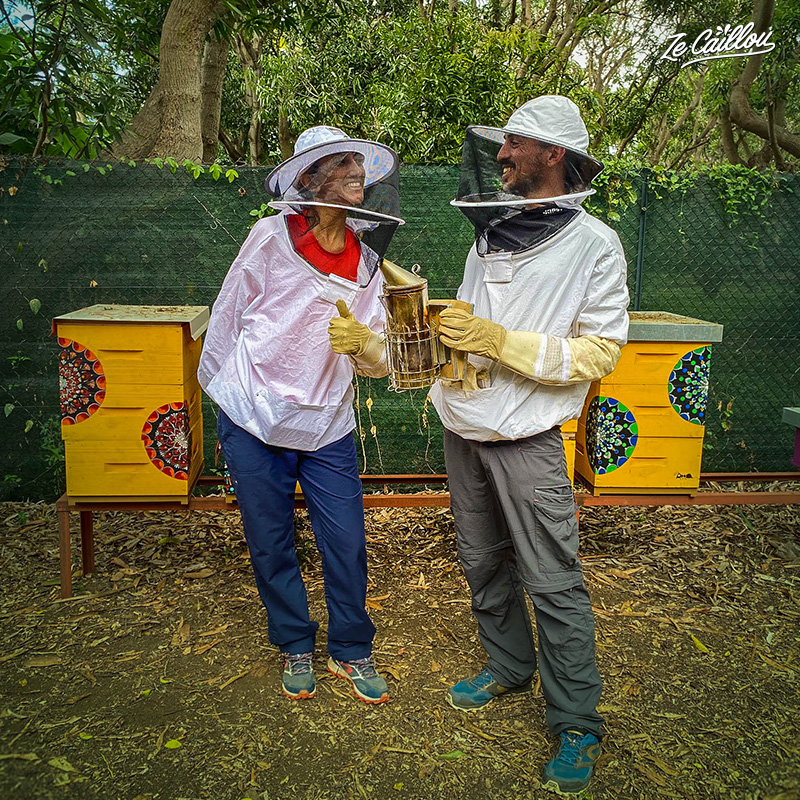
Back to school!
After this little tour, we sit down, like at school! Dorothy tells us that there are over 20,000 species of bees…and not all of them produce honey! In Reunion, we have only identified 10 species so far, that is to say!
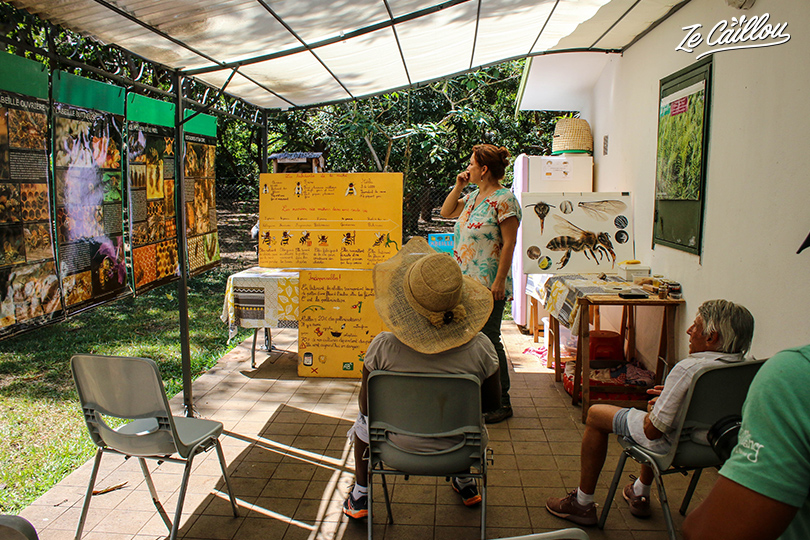
For example, the coal fly is a solitary bee! Some lay in trunks, others in snail shells, others are terricolous or woolly… There are masons, leaf cutters… it’s impressive!
They make a nest, deposit food in it, lay eggs, and when the baby bee is born, it eats the reserve and is ready to join the colony.
80-120 million years old
And yes, bees arrived on earth between 80 and 120 million years ago. It makes you wonder when you know that man, only 20,000 years ago! So who’s the boss? And yet they only live about a month and a half (in a hive).
Moreover in nature, we call it a colony, not an apiary. The apiary appeared when men, interested in honey, decided to group them in hives to make harvesting easier!
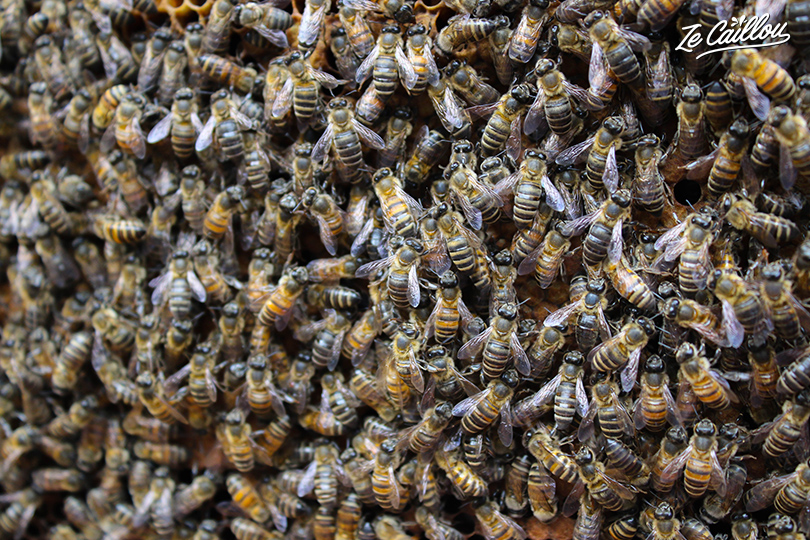
Eat royal jelly and you will become a queen!
We’re not going to spoil everything for you, but we learn some amazing things, really! For example, the queen, who can live up to 5 years and whose only mission is to lay eggs, will become a queen through her diet… So it is the bees who choose who will be the queen.
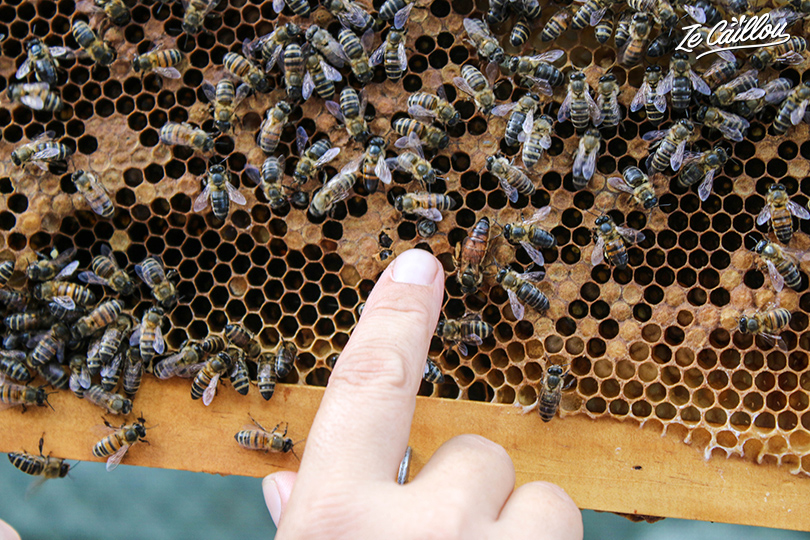
If they feed the baby with pollen, it will become a worker, with royal jelly it’s on its way to the throne! And when the queen gets tired, the workers stop feeding her so that she leaves (with half of the hive just that, it’s called swarming) and they feed a new princess… Nature is well done !
Bees have many lives!
In its life cycle, a bee is in turn: cleaner, nurse, storekeeper, builder, guardian and forager… All very important tasks! We won’t give you the details, we’ll let you discover all of this for yourself.
Incredible but true…
There are about 10% males in a hive, their only role is to fertilize the princesses. But what’s crazy is the way they’re designed…
Similarly, the defense of bees against a death’s-head butterfly intrusion into the hive (come to steal the nectar) is simply incredible…
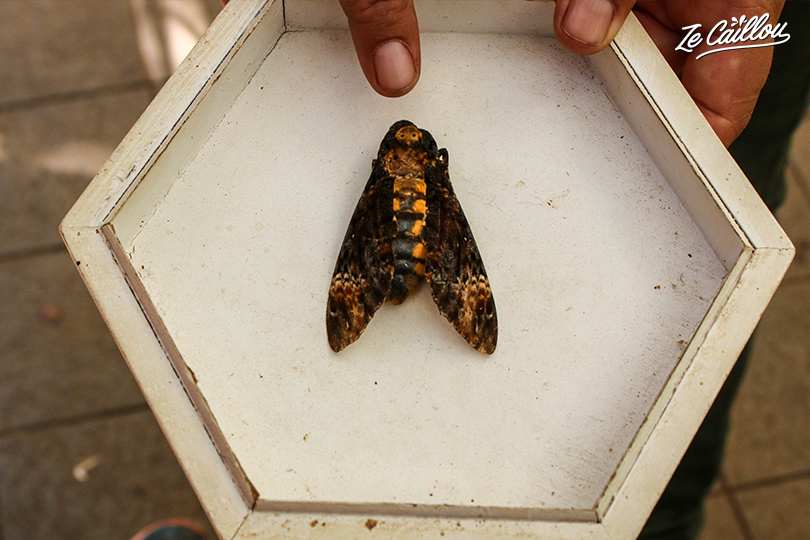
Does it tickle you? Well go ask Dorothy all that…it’s exciting!
Visit an apiary: hives of the magical bee garden!
And yes, we talk we talk, but it’s time to adorn our most beautiful beekeeper’s suits (smocks) and pair of gloves to go and discover the hives up close in complete safety!
Dorothée explains to us how it will unfold, the behavior to adopt. Smoking the entrance to the hives before opening them, being calm and serene with slow gestures so as not to frighten them.
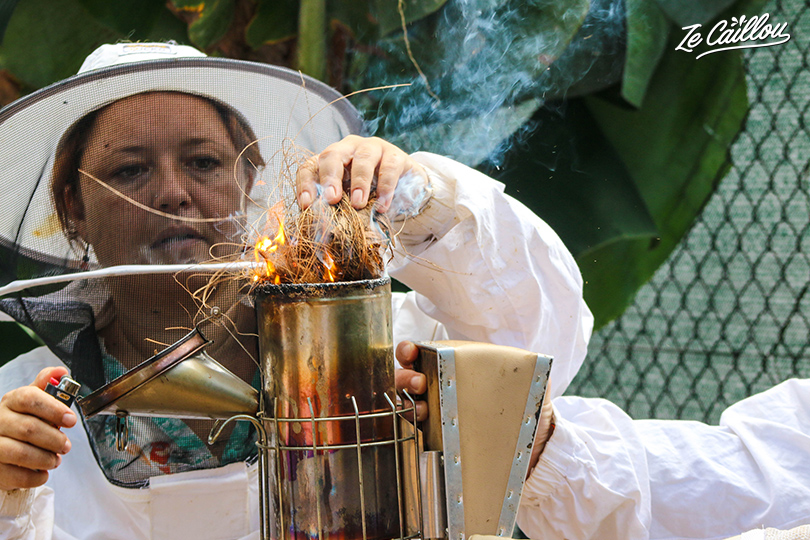
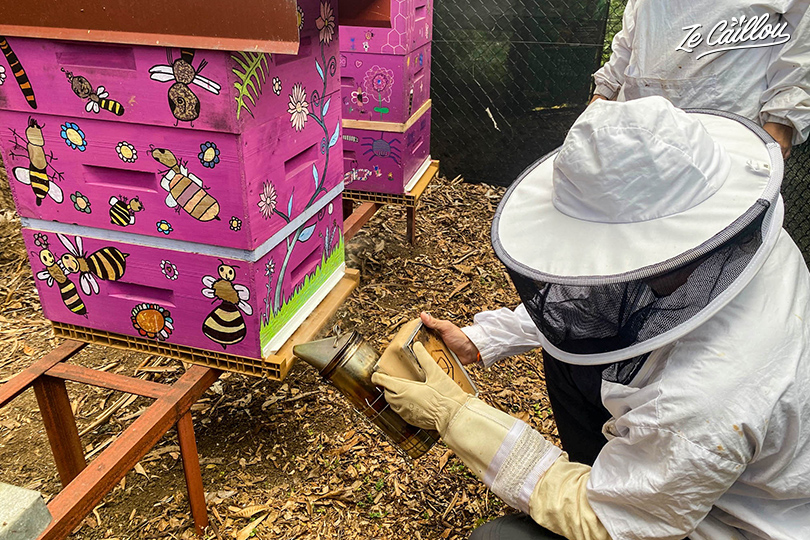
We can observ the bees’life so closely… we even spot a queen, cleaners and males.
We even see foragers bringing back pollen and passing it to the storekeepers… It really is the magical bee garden!
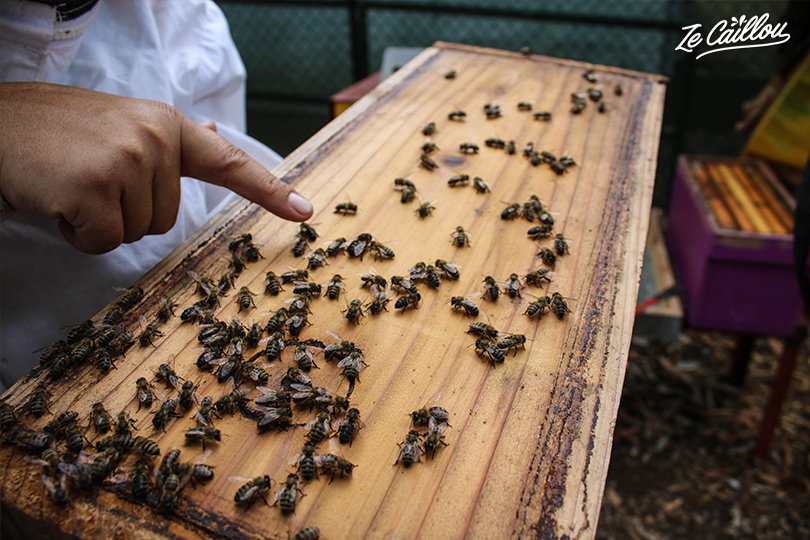
We even have the chance to gently manipulate a hive frame! We are like children…
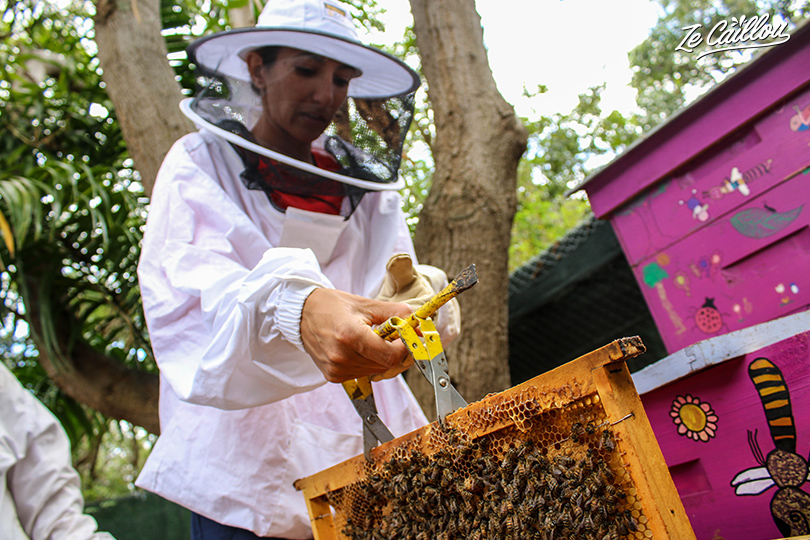
And honey from the Magic Bee Garden…
We won’t bother them for too long. While we’ve all been amazed, we’re going back to class for the last part!
We’re going to make a little beeswax candle and also do a tasting of different honeys… from here and elsewhere! And even for those who love honey, it’s not always easy to spot which is which!
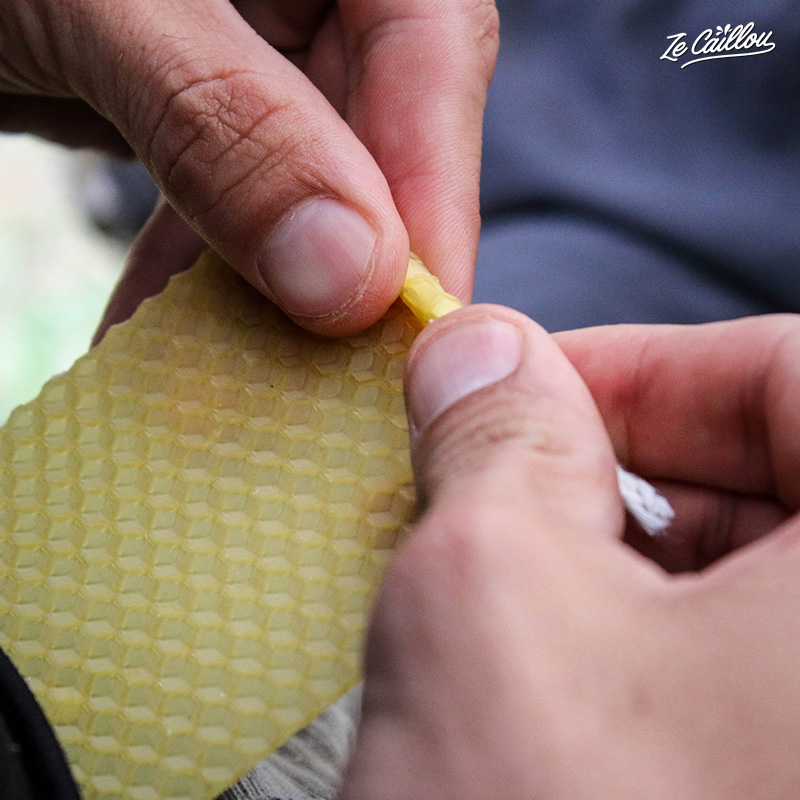
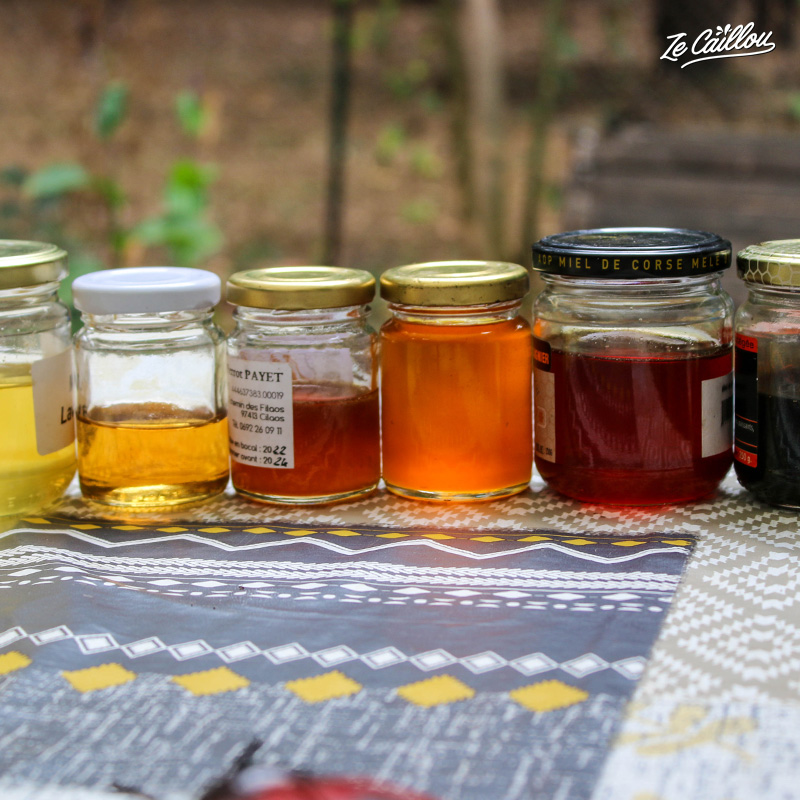
That’s it, the workshop is coming to an end and it’s time to leave Dorothée and the magical bee garden! For a real moment of awareness of the environment, nature, the protection of bees, do not hesitate to participate in this great Zarlor!
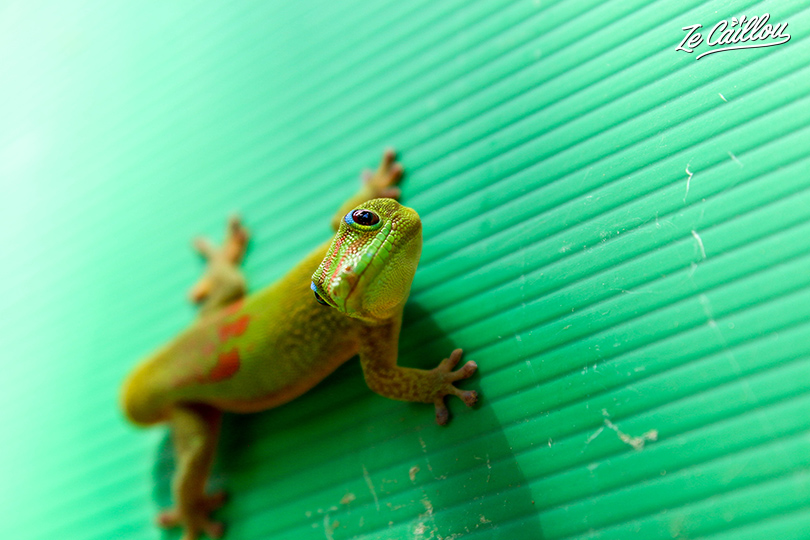
Environment!
Beyond the bees, Dorothée makes us aware of the importance of fauna and flora in general and their role in preserving the environment.
Practical Info about Visit an apiary in Reunion:
This Zarlor “Visit an apiary in Reunion” takes place in Saint-Paul: Chemin du Tour des Roches, 97460 Saint-Paul.
- It includes the theoretical workshop on beekeeping + practical workshop “live my life as a beekeeper” + visit to the butterfly garden + honey tasting + snack
- It takes 3 hours (8h00-11h00) and the price is 34€ per person.
- To book your Zarlor, head to the (in french) West Tourist Office website
Remember to take: comfortable clothes, sneakers, sunscreen.
And to find all our activities in Réunion, it’s here !

Be First to Comment